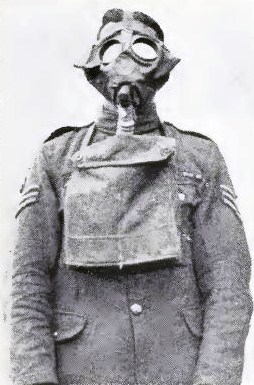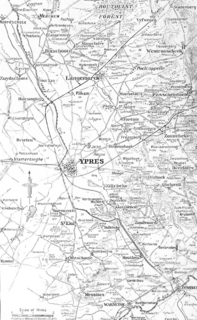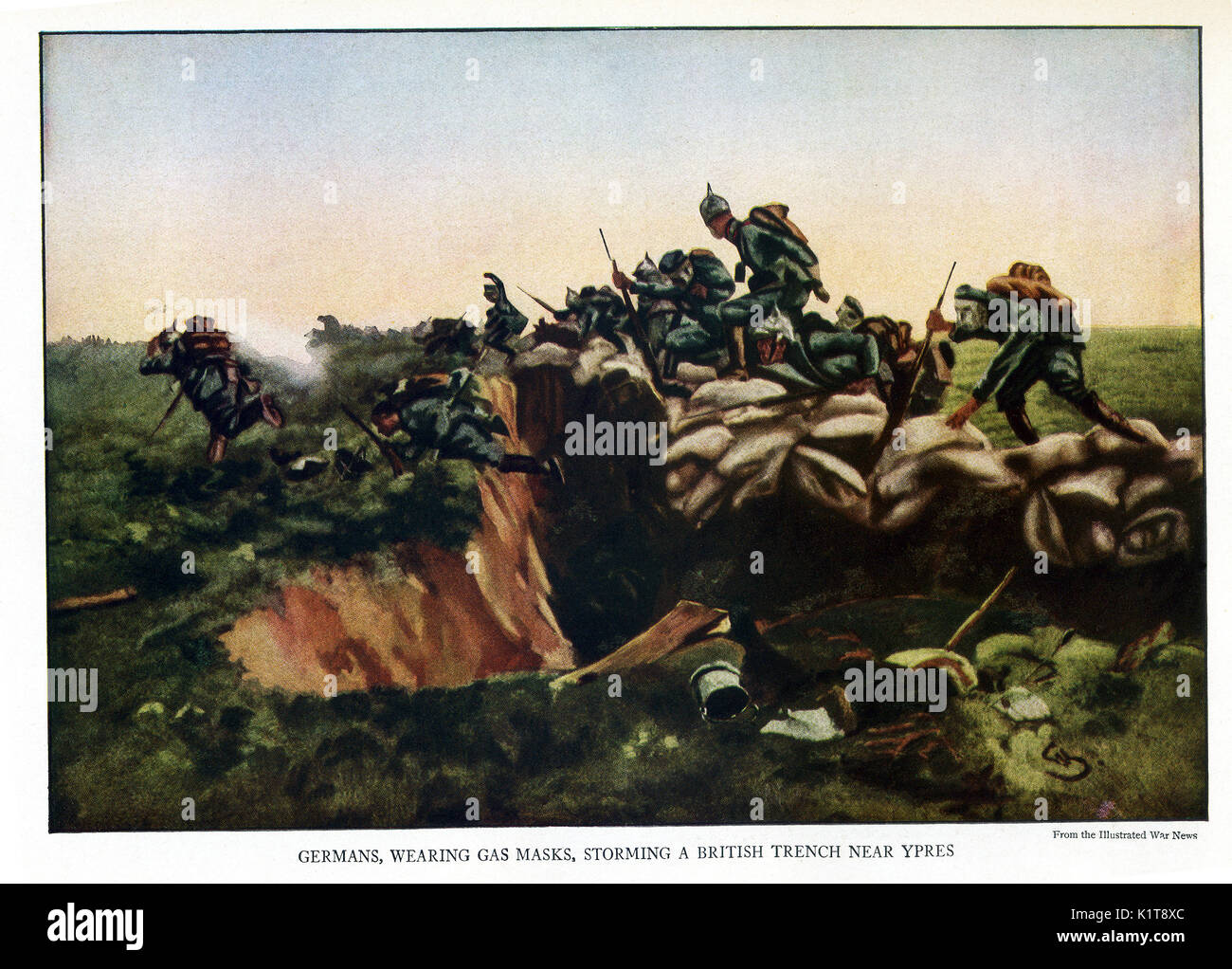Your Gas attacks at wulverghem images are ready. Gas attacks at wulverghem are a topic that is being searched for and liked by netizens today. You can Find and Download the Gas attacks at wulverghem files here. Download all free photos and vectors.
If you’re looking for gas attacks at wulverghem pictures information linked to the gas attacks at wulverghem interest, you have visit the ideal site. Our website always provides you with hints for refferencing the highest quality video and image content, please kindly hunt and locate more enlightening video content and images that fit your interests.
Gas Attacks At Wulverghem. The SBR was further revised and updated in 1917 and again in September 1918 and saw service until 1924. The month long attempt by the German 4th Army to capture the Belgian town of Ypres had ground to a halt a week earlier and had included two large scale poison gas attacks in the vicinity of Wulverghem. Diagram of German cloud gas attack Wulverghem 30 April 1916png. From Wikimedia Commons the free media repository.
 Battle Of Loos National Army Museum From nam.ac.uk
Battle Of Loos National Army Museum From nam.ac.uk
The gas used by the German troops at Wulverghem was a mixture of chlorine and phosgene which had been used against British troops on 19 December 1915 in the First German phosgene attack on British troops at Wieltje north-east of Ypres. Remaining with the 1st Battalion Hemington was present at Wulverghem on the Ypres salient when the Germans launched chlorine and phosgene gas attacks on 30 April and 17 June 1916. Raiding parties from the German 45 Reserve Division attacked with varying success. The Gas attacks at Wulverghem 30 April and 17 June 1916 were German cloud gas releases during the First World War on British troops in the municipality of Heuvelland near Ypres in the Belgian province of West Flanders. German gas engineers from Pionier Regt. British Forces were engaged in 60 local raids.
German Gas Attacks 27th30th April.
German Gas Attacks 27th30th April. On the night of 2930th of April 1916 the Germans carried out a gas attack on a considerable scale near Wulverghem on a front of 3500 yards held by the 3rd and 24th Divisions. German gas attacks on British troops at Wulverghem 30 April and 17 June 1916 Notes A German account in the history of Bavarian Infantry Regiment 9 recorded parties raiding from 645800 am. The Germans covered the sound of the gas being released with heavy rifle and machine gun fire. Gas attacks at Hulluch were two German cloud gas attacks on British troops during World War I from 2729 April 1916 near the village of Hulluch 1-mile 16 km north of Loos in northern France. Remaining with the 1st Battalion Hemington was present at Wulverghem on the Ypres salient when the Germans launched chlorine and phosgene gas attacks on 30 April and 17 June 1916.
 Source: wikiwand.com
Source: wikiwand.com
German gas attacks at Wulverghem 30 April and 17 June 1916 Notes On a lethality index chlorine was measured at 7500 and phosgene at 450 in which the smaller number represents the deadlier gas. Jump to navigationJump to search. Gas attacks and shrapnel wounds. Considerable scale near Wulverghem on a front of 3500 yards. On the night of 2930th of April 1916 the Germans carried out a gas attack on a considerable scale near Wulverghem on a front of 3500 yards held by the 3rd and 24th Divisions.
 Source: pinterest.com
Source: pinterest.com
Nevertheless 24th Division suffered more than 500 casualties including 300 from the gas. Chart of British gas casualties 1915-1916png 666 232. Eloi and the later Wulverghem Gas Attacks. Fifteen patients died the same day as George many apparently from gas poisoning22 In April and June 1916 the 1st. They were taken to Wulverghem near Ypres.
Source: encrypted-tbn0.gstatic.com
German gas attacks on British troops at Wulverghem 30 April and 17 June 1916 Notes On a lethality index chlorine was measured at 7500 and phosgene at. Gas attacks and shrapnel wounds. Poisonous smoke has been utilized sometimes in warfare since old times and in 1912 the French utilized percentages of tear gas in police operations. The largest burden was borne by the French around Verdun. The Gas attacks at Wulverghem 30 April and 17 June 1916 were German cloud gas releases during the First World War on British troops in the municipality of Heuvelland near Ypres in the Belgian province of West Flanders.
 Source: pinterest.com
Source: pinterest.com
Diagram of German cloud gas attack Wulverghem 30 April 1916png. Nevertheless 24th Division suffered more than 500 casualties including 300 from the gas. German Gas Attacks 27th30th April. Considerable scale near Wulverghem on a front of 3500 yards. In 1917 they were in action at The Battle of Vimy Ridge in the Spring The Battle of Messines in June and Third Battle of Ypres in October before moving south where they were in action during The Cambrai Operations when the Germans.
 Source: nam.ac.uk
Source: nam.ac.uk
German gas attacks on British troops at Wulverghem 30 April and 17 June 1916 Notes A German account in the history of Bavarian Infantry Regiment 9 recorded parties raiding from 645800 am. Nicola Rippon shares ancestral stories from the First World War. An initial order was placed in June 1916 for 100000 however following the gas attack on the British at Wulverghem opposite the German lines at Messines Ridge this was revised to 500000. On both occasions there had been mass British casualties. The Germans covered the sound of the gas being released with heavy rifle and machine gun fire.
 Source: wikiwand.com
Source: wikiwand.com
The month long attempt by the German 4th Army to capture the Belgian town of Ypres had ground to a halt a week earlier and had included two large scale poison gas attacks in the vicinity of Wulverghem. On the night of the 29th30th April the enemy carried out a gas attack on a. Remaining with the 1st Battalion Hemington was present at Wulverghem on the Ypres salient when the Germans launched chlorine and phosgene gas attacks on 30 April and 17 June 1916. On April 22 1915 German forces shocked Allied soldiers along the Western Front by shooting extra than 150 tons of lethal chlorine gas versus two French colonial divisions at Ypres in Belgium. Diagram of German cloud gas attack Wulverghem 30 April 1916png.
 Source: commons.wikimedia.org
Source: commons.wikimedia.org
They were taken to Wulverghem near Ypres. On both occasions there had been mass British casualties. Having experienced similar attacks during the Second Battle of Ypres in May 1915. He died of gas poisoning on 1 May 1916 at the 1st Canadian Casualty Clearing Station20 The effects of the gas attacks were also felt at the 1st CCCS stationed near Bailleul21 which was just about six miles from Wulverghem. FileDiagram of German cloud gas attack Wulverghem 30 April 1916png - Wikimedia Commons.
 Source: wikiwand.com
Source: wikiwand.com
Gas attacks and shrapnel wounds. Raiding parties from the German 45 Reserve Division attacked with varying success. Chart of British gas casualties 1915-1916png 666 232. Overlaps the entry below for 1916. 36 released gas at 140 am.
 Source: wikiwand.com
Source: wikiwand.com
And that three patrols entered the British positions where they inflicted losses in the defenders. The Gas attacks at Wulverghem 30 April and 17 June 1916 were German cloud gas releases during the First World War on British troops in the municipality of Heuvelland near Ypres in the Belgian province of West Flanders. FileDiagram of German cloud gas attack Wulverghem 30 April 1916png - Wikimedia Commons. He died of gas poisoning on 1 May 1916 at the 1st Canadian Casualty Clearing Station20 The effects of the gas attacks were also felt at the 1st CCCS stationed near Bailleul21 which was just about six miles from Wulverghem. German gas attacks at Wulverghem 30 April and 17 June 1916 Notes On a lethality index chlorine was measured at 7500 and phosgene at 450 in which the smaller number represents the deadlier gas.
 Source: markedbyteachers.com
Source: markedbyteachers.com
On the night of 2930th of April 1916 the Germans carried out a gas attack on a considerable scale near Wulverghem on a front of 3500 yards held by the 3rd and 24th Divisions. An initial order was placed in June 1916 for 100000 however following the gas attack on the British at Wulverghem opposite the German lines at Messines Ridge this was revised to 500000. And that three patrols entered the British positions where they inflicted losses in the defenders. In 1917 they were in action at The Battle of Vimy Ridge in the Spring The Battle of Messines in June and Third Battle of Ypres in October before moving south where they were in action during The Cambrai Operations when the Germans. The first gas discharge took place on 30 April 1916 and was followed by another attack on 17 June.
 Source: pinterest.com
Source: pinterest.com
The gas attacks at Wulverghem were part of the sporadic fighting which took place between battles in the Ypres Salient on the Western Front. In 1917 they were in action at The Battle of Vimy Ridge in the Spring The Battle of Messines in June and Third Battle of Ypres in October before moving south where they were in action during The Cambrai Operations when the Germans. The German gas attack at Wulverghem The Battle of Delville Wood The Battle of Guillemont. Overlaps the entry below for 1916. The month long attempt by the German 4th Army to capture the Belgian town of Ypres had ground to a halt a week earlier and had included two large scale poison gas attacks in the vicinity of Wulverghem.
 Source: pinterest.com
Source: pinterest.com
Poisonous smoke has been utilized sometimes in warfare since old times and in 1912 the French utilized percentages of tear gas in police operations. The Gas attacks at Wulverghem in the municipality of Heuvelland were two German cloud gas attacks during World War I on British troops near Ypres in the Belgian province of West Flanders. FileDiagram of German cloud gas attack Wulverghem 30 April 1916png. Stories from a Derby family at war. Chart of British gas casualties 1915-1916png 666 232.
 Source: alamy.com
Source: alamy.com
Gas Attack Wulverghem 1916. Gas attacks at Hulluch were two German cloud gas attacks on British troops during World War I from 2729 April 1916 near the village of Hulluch 1-mile 16 km north of Loos in northern France. On April 22 1915 German forces shocked Allied soldiers along the Western Front by shooting extra than 150 tons of lethal chlorine gas versus two French colonial divisions at Ypres in Belgium. In 1917 they were in action at The Battle of Vimy Ridge in the Spring The Battle of Messines in June and Third Battle of Ypres in October before moving south where they were in action during The Cambrai Operations when the Germans. And that three patrols entered the British positions where they inflicted losses in the defenders.
 Source: wikiwand.com
Source: wikiwand.com
The Germans covered the sound of the gas being released with heavy rifle and machine gun fire. The SBR was further revised and updated in 1917 and again in September 1918 and saw service until 1924. The gas attacks at Wulverghem were part of the sporadic fighting which took place between battles in the Ypres Salient on the Western Front. On April 22 1915 German forces shocked Allied soldiers along the Western Front by shooting extra than 150 tons of lethal chlorine gas versus two French colonial divisions at Ypres in Belgium. Diagram of German cloud gas attack Wulverghem 30 April 1916png.
 Source: slideplayer.com
Source: slideplayer.com
FileDiagram of German cloud gas attack Wulverghem 30 April 1916png. An initial order was placed in June 1916 for 100000 however following the gas attack on the British at Wulverghem opposite the German lines at Messines Ridge this was revised to 500000. Nicola Rippon shares ancestral stories from the First World War. On the night of the 29th30th April the enemy carried out a gas attack on a. The Germans covered the sound of the gas being released with heavy rifle and machine gun fire.
 Source: wikiwand.com
Source: wikiwand.com
Gas attacks at Hulluch were two German cloud gas attacks on British troops during World War I from 2729 April 1916 near the village of Hulluch 1-mile 16 km north of Loos in northern France. Raiding parties from the German 45 Reserve Division attacked with varying success. Considerable scale near Wulverghem on a front of 3500 yards. The Germans covered the sound of the gas being released with heavy rifle and machine gun fire. The Gas attacks at Wulverghem in the municipality of Heuvelland were two German cloud gas attacks during World War I on British troops near Ypres in the Belgian province of West Flanders.
 Source: wikiwand.com
Source: wikiwand.com
Jump to navigationJump to search. The gas attacks were part of the sporadic fighting between battles in the Ypres Salient on the Western Front. The gas attacks at Wulverghem were part of the sporadic fighting which took place between battles in the Ypres Salient on the Western Front. German gas engineers from Pionier Regt. German gas attacks at Wulverghem 30 April and 17 June 1916 Notes On a lethality index chlorine was measured at 7500 and phosgene at 450 in which the smaller number represents the deadlier gas.
 Source: wikiwand.com
Source: wikiwand.com
Considerable scale near Wulverghem on a front of 3500 yards. Having experienced similar attacks during the Second Battle of Ypres in May 1915. The largest burden was borne by the French around Verdun. Remaining with the 1st Battalion Hemington was present at Wulverghem on the Ypres salient when the Germans launched chlorine and phosgene gas attacks on 30 April and 17 June 1916. An initial order was placed in June 1916 for 100000 however following the gas attack on the British at Wulverghem opposite the German lines at Messines Ridge this was revised to 500000.
This site is an open community for users to submit their favorite wallpapers on the internet, all images or pictures in this website are for personal wallpaper use only, it is stricly prohibited to use this wallpaper for commercial purposes, if you are the author and find this image is shared without your permission, please kindly raise a DMCA report to Us.
If you find this site helpful, please support us by sharing this posts to your preference social media accounts like Facebook, Instagram and so on or you can also bookmark this blog page with the title gas attacks at wulverghem by using Ctrl + D for devices a laptop with a Windows operating system or Command + D for laptops with an Apple operating system. If you use a smartphone, you can also use the drawer menu of the browser you are using. Whether it’s a Windows, Mac, iOS or Android operating system, you will still be able to bookmark this website.







